#mini Israel of India
Explore tagged Tumblr posts
Text
Packaging-list 📦 Packaging-listt 📦 CARDBOARDHEARTSS NEWSS 📦 FUCK HYBE LIST
⚠️RULES⚠️
📦no harassment/hate asks
📦no racism, homophobia, transphobia, colourism, anti-blackness, islamophobia, bullying, fatphobia, misogyny, pro-israel
📦do not rush me as well, i WILL get to your ask
📦no 18+ readings (I’m a minor)
📦no love life, ideal type, idol/celeb future spouse readings, idol/celeb family members readings, any thing related to death
📦I only accept mini personality readings, first impressions, friendship readings, (insert name) as a friend, peoples thoughts of each other!

Kpop Readings
NEWJEANS Hanni and Halle Bailey First impressions
Jenny Park Mini Personality reading
Latrice Kabamba Mini Personality reading
Jam Republic Mini Group Dynamic reading
How do ITZY and NCT view each other
BLACKPINK Lisa and Rihanna First Impressions
NEWJEANS Minji Current Energy (30/01/2024)
Jenny Park and (G)I-DLE Miyeon First Impressions
NEWJEANS Danielle Mini Personality reading
LE SSERAFIM Coachella 2024
(G)-IDLE Minnie Mini Personality reading
NEWJEANS Minji Mini Personality Reading
(G)-IDLE Shuhua Mini Personality Reading
LE SSERAFIM Yunjin Mini Career Reading
IU Mini Personality Reading
NEWJEANS members love languages
LLOUD Mini Reading
NEWJEANS x TYLA Collaboration?
IU x NEWJEANS Hyein Collaboration
ATEEZ Coachella 2024 Reading
LE SSERAFIM Twitter Drama
NEWJEANS Comeback Mini Reading
Tomorrow X Together Comeback Mini Reading
KOZ Future Girl Group Mini Reading
LE SSERAFIM Eunchae Mini Career Reading
Kpop Exposé Reading
Lucas Mini Reading
NEWJEANS Hanni Mini Personality Reading
NEWJEANS Hyein Mini Personality Reading
NEWJEANS Haerin Mini Personality Reading
LE SSERAFIM Yunjin Mini Personality Reading
LE SSERAFIM Sakura Mini Personality Reading
LE SSERAFIM Chaewon Mini Personality Reading
LE SSERAFIM Kazhua Mini Personality Reading
LE SSERAFIM Eunchae Mini Personality Reading
NCT 127’s Johnny and Willow Smith First Impressions
STRAY KIDS Hyunjin and Anne Hathaway First Impressions
BLACKPINK’s Lisa and Taylor Swift First Impressions
P1HARMONY Jeongseob Mini Personality Reading
BOYSNEXTDOOR Leehan Mini Personality Reading
TWICE Sana Mini Personality Reading
Minji Mini Career Reading
NEWJEANS Haerin Green vs Red Flags
BLACKPINK Jisoo and Yara Shahidi’s First Impressions of Each Other
LE SSERAFIM Yunjin and ENHYPEN Jay Friendship Dynamics
BLACKPINK Lisa and TYLA Mini Reading
TWICE Jeongyeon Solo
NEWJEANS Hyein Mini Career Reading
LE SSERAFIM Yunjin St*rbucks Apology?
Teo Yoo and Jaehyun Vedic Astrology Mini Analysis
RIIZE Solar Return Chart Transit Chart Mini Analysis
Pinkpantheress and NEWJEANS Collaboration?
Han So Hee Transit Chart Analysis

North American and European Readings
Jude Bellingham Mini Personality reading
Jude Bellingham Current Energy (03/02/2024)
What do Real Madrid players think of Jude Bellingham
Jobe Bellingham Mini Personality reading
Trent Alexander Arnold Mini Personality reading
Levi Colwill Mni Personality reading
India Armateifio Mini Personality reading
Doja Cat Mini Personality reading
Tyla Mini Personality Reading
Melanie Martinez Personality reading
Jude Bellingham and Kylian Mbappe Dynamic
Alejandro Garnacho Mini Personality Reading
Hector Fort Mini Personality Reading
Joao Felix Mini Personality Reading
Alejandro Balde Mini Personality Reading
Marc Guiu Mini Personality Reading
Pinkpantheress Mini Personality Reading
Future of TikTok Mini Reading
Lolirock Mini Reading
Trump vs Biden Mini Reading

Eastern and South-East Asian Readings
Nijiro Murakami Mini Personality Reading
Kitty Chicha Mini Personality Reading
Psychic Fever Mini Career Reading

PAC Readings
Would your celebrity crush want to date you
What would you be known for if you were famous
What would BLACKPINK members think of you
What would BTS members think of you
What would NEWJEANS members think of you
What would TWICE members think of you

Astrology
Psychic Fever SR Chart Reading
Jude Bellingham Short Birth Chart Analysis
Pinkpantheress Singer Persona Chart Mini Analysis
LE SSERAFIM Solar Return Chart Analysis
LE SSERAFIM Encore Stage Transit Analysis
Teo Yoo and NCT Jaehyun Vedic Astrology Analysis
RIIZE Solar Return x Transit Chart Dating Scandal Analysis
Psychic Fever 2025 Solar Return
Psychic Fever II EP Analysis
TikTok and USA Synastry Mini Reading
Pinkpantheress D1 Chart Analysis

Paid Readings (all readings are for $15)
Vedic Chart Reading Booking : 🪷
Paid Tarot Reading Booking : 🃏



Discord

#tarot#tarot reading#newjeans#stray kids#street woman fighter 2#kpop tarot#black tarot readers#bridgerton#kpop#black women#halle bailey#masterlist#tarot master list
159 notes
·
View notes
Text
Colonialism
As we face the end of the year with the IDF still conducting its campaign in Gaza, with so many hostages still not released, and with the support of the world waning by the minute, we could all use a bit of shoring up. I am speaking of myself as well, by the way: despite my abiding confidence in the innate tolerance of Americans, I continue to feel shaken by the ferocity of the anti-Zionism, anti-Israelism, and anti-Semitism that seems to have arisen almost from nowhere in the wake of Israel’s response to the Simchat Torah massacre.
This week, I would like to address a specific aspect of that ferocity, the accusation—by now almost a commonplace among the haters—that Israel is nothing but a last-gasp outpost of colonialism. And, as a result, that the Jews of Israel have the same right to Palestine that the Belgians had to the Congo, the Dutch to Indonesia, the French to Algeria, the British to India, and the Germans to Namibia: none at all. (It is interesting how few of those who regularly tar Israel with that brush feel the same way about Australia or Canada, not to mention our own nation, which actually were founded by overt colonialists who saw nothing at all wrong with moving onto other people’s turf and declaring their independence in that place. About that paradox, I will write on another occasion.)
Colonialism, sometimes called imperialism, surely was one of the most pernicious avenues of political theorizing ever devised to justify the conquest of other people’s countries and the addition of those conquered lands to the conquerors’ self-proclaimed empire. And this is so much the case that, at least for most of us, even the rationale behind the concept seems impossible to grasp. It is true that decades of mini-trade-wars between Dutch, British, and Portuguese set the stage for the eventual absorption of India into the British Empire, but the larger picture is the one that survives of a rapacious Empire ignoring the fact that it had no conceivable right to a country thousands of miles away from Britain with which it had no history of enmity, let alone of overt hostility or warfare, and unilaterally making that place part of its Empire, and then using the full force of its own Armed Forces to stifle dissent and to prevent any serious movement on the part of the people whose country it actually was towards self-rule. This was the story of the British in India, but it was also the story of many other nations struggling to annex the maximum number of overseas territories without regard for the wishes of the people who actually lived there.
I have to assume that most colonialists were motivated by pure greed. But there were others who were motivated not by rank acquisitiveness or covetousness, but by the supremely arrogant assumption that they were actually doing the native people’s whose nations they occupied a huge favor by exposing them to Western ways and beliefs. The prize for the most grotesque expression of that idea, even after all these years, has to go to Rudyard Kipling (1865–1936), whose famous poem, “The White Man’s Burden,” depicted colonialism not as venal or brutal, but as virtuous. “Take up the White Man’s burden,” he wrote to his fellow Brits. “Send forth the best ye breed. / Go bind your sons to exile / to serve your captives’ need: / To wait in heavy harness / On fluttered folk and wild / Your new-caught sullen peoples, / Half devil and half child.” It’s really hard to know what to say to that! (The poem goes on at length along similar lines. To read the full poem, click here.)
But what could any of this have to do with Israel?
The history of Israel is recorded in the historical books of the Bible and confirmed by archelogy: there have been Jewish people, or the ancestors of what we reference as the Jewish people, in the Land of Israel since the beginning of the 2nd millennium BCE and there has never been a day since then that there was not a Jewish presence in the land. That’s about 3000 years of continued residence in the land and that is at the core of the Jewish claim to consider Israel as the national homeland of the Jewish people. The nations they replaced have long since vanished: there are no surviving Girgashites or Kenites to negotiate with. But where did the Arabs come from?
As the seventh century dawned, the world’s two great super-powers, Byzantium and Persia, were at war. Things were calm in the Holy Land for a while, but then, in 613, the local Jews joined with the Persians in their ongoing campaign against the Byzantines. In 614, the Persians, now fighting alongside about 20,000 Jewish supporters, captured Jerusalem. It was a bloody war. According to some ancient historians, the siege of Jerusalem resulted in the deaths of about 17,000 civilians. Another 4500 or so, taken first as prisoners of war, were eventually murdered by the Persians at the Mamilla Pool, then a man-made lake just outside Jerusalem and today the site of a very popular upscale shopping mall. Another 35,000 or so were exiled to Persia.
But the tide eventually turned. By 617, the Persians determined that their best interests lay in making peace with the Byzantines even if it meant betraying their Jewish allies. And that is just what they did. In 628, the shah of Iran, King Kavad II, made peace with his Byzantine counterpart, a man named Heraclius. The Jews surrendered and asked for the emperor’s protection, which was granted. That lasted about twelve minutes, however: before the ink on the treaty was dry, a massacre of the Jews ensued throughout the land and Jewish residency in Jerusalem was formally forbidden.
And now we get to the relevant part. Just ten years later, in 648, the Byzantine Empire was invaded again, this time by the Islamic State that had grown up after Mohammed’s death in 632. The Byzantines retreated, the Muslims took over, and Israel was then ruled by Muslim Arab colonialists until the Crusaders arrived a cool four and a half centuries later in 1099. Nor is “colonialist” a vague term here. In fact, it is the precisely accurate one: a powerful nation wrests land from a neighboring nation that it bests on the battlefield, then annexes that land to itself with reference neither to the history of the place nor to the wishes of its citizens.
At first, life under Arab occupation wasn’t that bad. Historians estimate that there were between 300,000 and 400,000 Jewish residents in Israel in those days. Umar, the second caliph of the Rashidun caliphate, even eventually permitted Jews to return to Jerusalem. The famous Pact of Umar promised Jewish families security and safety, but also classified Jews as dhimmis, i.e., as non-Muslims whose presence in Islamic lands was begrudgingly to be tolerated as long as they accepted their second-class status and agreed to pay a special tax, called the jizya, that was levied against non-Muslims. Things were not great, but tolerable. But tolerable didn’t last, particularly after the Arabs built the Dome of the Rock on the Temple Mount in 691 and the Al-Aksa Mosque in 705. By 720, Jews were banned from the mount, the holiest site in all of Judaism and things just continued to deteriorate from there. (To read more about the Pact of Umar, click here.)
And so did the Arabs come to Byzantine Palestine, a land that had been the Jewish homeland even then for one and a half millennia. But although Muslim rule eventually gave way to a long series of foreign overlords who seized the land and ruled over it for as long as they were able, the Muslims who came along with the armies of occupation remained in place. And so were set in place the ancestors of today’s Palestinian Arabs.
Working all that data yields the semi-astounding result that, in the almost two thousand years from the time the Babylonians laid siege to Jerusalem in biblical times until the Crusaders were finally defeated once and for all by the Mamluks (yet a different version of Arab invader), the Jews were able to restore Jewish sovereignty to the Land of Israel and rule over themselves for precisely one single century, the one stretched out between the Maccabean victory over King Antiochus in 164 B.C.E. and Romans’ successful invasion of the land a century and a year later in 63 B.C.E. That’s a lot of years of occupation by a wide range of occupiers.
To refer to today’s Palestinians as imperialist colonizers because their ancestors came to the land as part of an army of occupation thirteen centuries ago—that seems exaggerated: thirteen hundred years is a long time! But to refer to the Jews of Israel, whose ancestors have been present in that place not for centuries but for millennia—that seems even wackier and far less reasonable. I suppose some of Israel’s enemies must be sincere in their sense of Israel as a force of occupation, as a last-gasp vestige of European colonialism. But leaving aside the detail that most Israelis are not of European origin, the notion itself is simply incorrect. The Land of Israel has been the homeland of the Jewish people from time immemorial. To argue to the contrary is to ignore history. And ignoring history is never good policy, not for our own nation and not for anybody. Arabs have lived in Israel for more than a millennium. But to use that fact to deny the reasonableness of there being a Jewish state in the Land of Israel is simply an abuse of history.
2 notes
·
View notes
Text
News Roundup 6/15/2023 | The Libertarian Institute
Here is your daily roundup of today's news:
News Roundup 6/15/2023
by Kyle Anzalone
US News
A report released by the Office of the Director of National Intelligence (ODNI) on Friday shows the intelligence community is purchasing massive amounts of Commercially Available Information (CAI) that can “reveal sensitive and intimate information about individuals.” The Institute
An AP investigation found as $400 billion in pandemic welfare was stolen or inappropriately distributed. The Hill
The number of operational nuclear weapons around the would is increasing. Guardian
Russia
The Biden administration is expected to provide Ukraine with controversial depleted uranium ammunition for use with US-made Abrams tanks, The Wall Street Journal reported on Tuesday. AWC
The Biden administration on Tuesday announced a new $325 million arms package for Ukraine that includes Bradley and Stryker armored vehicles and ammunition for various weapons systems. AWC
A report from the Department of Defense Inspector General found Pentagon employees in Poland failed to follow procedures to account for military equipment being transferred to Ukraine. The Institute
Putin says Russia was deceived by the West over the grain export agreement. “Unfortunately, we were once again deceived. Nothing has been done to liberalize our grain supplies to foreign markets,” he said. TASS
French President Emmanuel Macron said Ukraine’s offensive could last weeks or months. Politico
German Defense Minister Boris Pistorius said Monday that Berlin won’t be able to replace every German-made Leopard tank that Ukrainian forces lose in their fight against Russia. AWC
Several Western media outlets reported Tuesday that the CIA warned Ukraine last year not to bomb the Nord Stream natural gas pipelines that connect Russia and Germany. AWC
Turkish President Recep Tayyip Erdogan said Wednesday that Sweden should not expect Ankara’s approval to join NATO at the alliance’s upcoming summit that will be held in Vilnius this July. AWC
Ukraine is eyeing dozens of US-made F/A-18 Hornet fighter jets that have been retired by the Australian Royal Air Force as part of its efforts to secure more Western-made aircraft. AWC
The New York Times reported on Wednesday that President Biden is under pressure from many of the US’s European allies to support giving Ukraine a clear path toward NATO membership. AWC
Germany and Poland are expected to reach an agreement to establish a Leopard repart base in Poland. Pravda
Congress is likely to pass another emergency funding bill for Ukraine, but it would probably receive less support, according to the New York Times. The Institute
China
NATO Secretary-General Jens Stoltenberg met with President Biden in Washington on Tuesday and said Russia must lose in Ukraine to send a message to China as the Western alliance increasingly has its eyes on the Asia Pacific. AWC
The head of the US Coast Guard said that its ships will conduct more activities in the Indo-Pacific to contest China’s territorial claims. The branch will attempt to increase its joint operations with other nations in the region as well. The Institute
The State Department confirmed on Wednesday that Secretary of State Antony Blinken will be visiting China, making him the highest-level Biden administration official to make the trip. AWC
India
The US is pushing India to buy drones. AJ
Middle East
The House passed a bill to create a special envoy to help facilitate normalization agreements between Israel and Arab states. Haaretz
Axios reported Tuesday that Israeli Prime Minister Benjamin Netanyahu told the Israeli Knesset’s foreign relations committee that the US and Iran have been holding indirect talks on a “mini agreement” related to Iran’s nuclear program. AWC
Israeli airstrikes hit targets outside of the Syrian capital of Damascus early Wednesday, wounding at least one Syrian soldier, Syria’s SANA news agency reported. AWC
Washington is attempting to pressure Tel Aviv into pulling back on its ties and trade with China, according to a report in Voice of America. After the European Union and the United States, the People’s Republic is Israel’s largest trade partner. The Institute
A spike in demand for weapons from Europe and the Abraham Accords made 2022 a banner year for the Israeli arms industry. Tel Aviv’s weapons exports reached a record $12.5 billion last year. The Institute
Read More
4 notes
·
View notes
Text


More than two miles long and 1,142 feet tall, Uluru, the red sandstone rock formation in Australia’s Northern Territory, wows travelers during the day.
But now, a new night spectacle Wintjiri Wiru illuminates the darkness adjacent to the monolith in a way that reveals Indigenous culture while dazzling with high-tech sound and lights.
“Humans are drawn to light—just think of how compelling sunsets are,” says Melbourne light artist Bruce Ramus, who designed the work in collaboration with the local Anangu people and Voyages Indigenous Tourism.
Wintjiri Wiru is just the latest offering—and newest technology — in the tradition of son et lumière (sound and light) shows, grand public spectacles projected on to (or close to) historic buildings and natural wonders.
These mash-ups of pageantry, culture, and art are experiencing a boom fueled by digital advances and tourist sites looking to attract visitors after dark.
Here’s where to see the latest shows, plus why visitors love these “virtual campfires.”
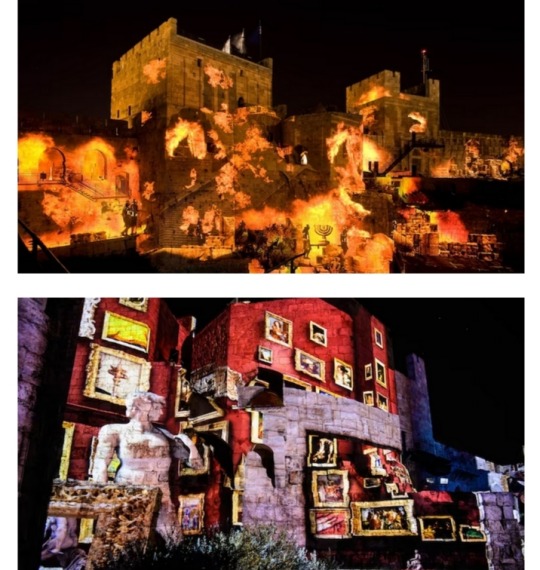
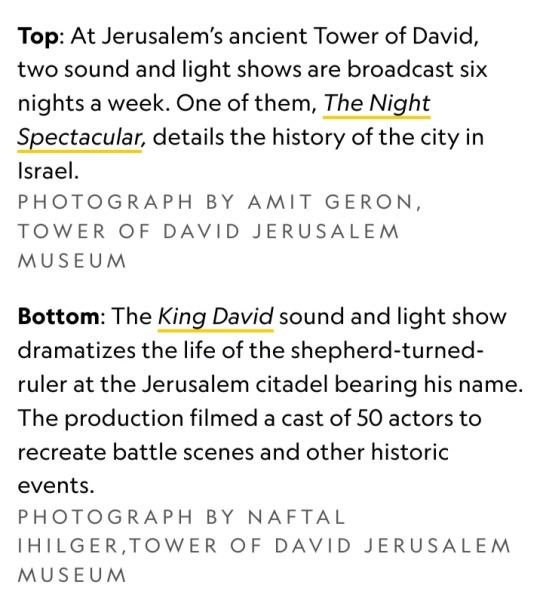
How did sound and light shows start?
Paul Robert-Houdin created the first sound and light show in 1952 at France’s Château de Chambord.
Music and narration played while slide projectors splashed colored lights on the 16th-century palace.
“We had the feeling that a new way of discovering and understanding monumental heritage was perhaps being born,” one observer wrote in Le Figaro newspaper.
The concept was a hit.
“Standing in the dark and being immersed in sounds and images creates a sense of enchantment,” says Jane Lovell, a professor of tourism at Canterbury Christ Church University in England.
In the following decades, other storied sites harnessed that magic, such as the Red Fort in Delhi, India, and Independence Hall in Philadelphia.
“There were captive audiences for these attractions, so the efforts were minimal—just light up these beautiful things that already existed,” says California light show producer Ryan Miziker.
Early technology was expensive and bulky: sofa-sized slide carousels, finicky stereo speakers that malfunctioned in bad weather.
The storytelling, if mostly historically accurate, could be clunky and lecturing.
At Egypt’s Pyramids at Giza, the still-running circa-1961 show features the Sphinx “narrating” a lofty spiel about ancient life as murky colored lights wash over the monuments.
youtube
https://youtu.be/anLYLqMyK1I
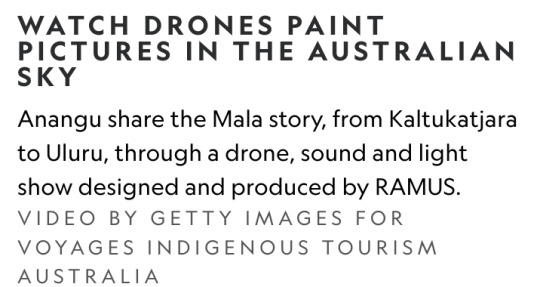
How tech took over light shows
“Son et lumieres started out as pretty rudimentary things—a castle would be lit up and a soundtrack would say, ‘this tower was built in 1592,’” says Ross Ashton of London’s Projection Studio, which designs extravaganzas for attractions from Welsh castles to Indian fortresses.
But by the 1990s, innovations in video, lasers, and audio meant creators could screen riveting, mind-bending shows.
“Digital video changed everything,” says Miziker.
“We had software to do 3-D mapping, which takes a round object like a globe and flattens it, or wraps any structure in overlapping, blending geometry.”
Sound evolved, too.
“Bells, spoken voices from different directions, or a fireball rolling, you can layer sound up, so it feels like a tapestry,” says Projection Studio’s sound artist Karen Monid.
Today’s sound and light shows are like mini action movies screened on historic buildings or natural wonders.
San Antonio’s The Saga wraps the 18th-century San Fernando Cathedral in sound effects (mariachi ballads, cannon blasts) and painterly images (folk dancers, renderings of the Alamo) to tell the story of the Texas city.
In Jerusalem, Israel, the ancient Tower of David has two night shows, one on city history and the other about the biblical shepherd-turned-ruler that gave the site its name.
Wintjiri Wiru harnesses LED lights, lasers, sound, and 1,100 drones to recount a legend from the Anangu, who consider Uluru sacred.
The show depicts mala (wallaby-rabbit) beings battling a gigantic devil dog spirit.
“Combine light with sound—in this case Anangu songs and other effects—and it’s like the desert is speaking,” says Ramus.
Other projects are more abstract, such as the new Aura Invalides show at Les Invalides in Paris, which fills the grand interiors of the historic military monument with surreal rays of colored light and outlines architectural elements in laser graffiti.
“People move around within the building, making it more like a 360-degree immersion than something didactical,” says Manon McHugh, a spokesperson for Moment Factory, the studio that created the show.
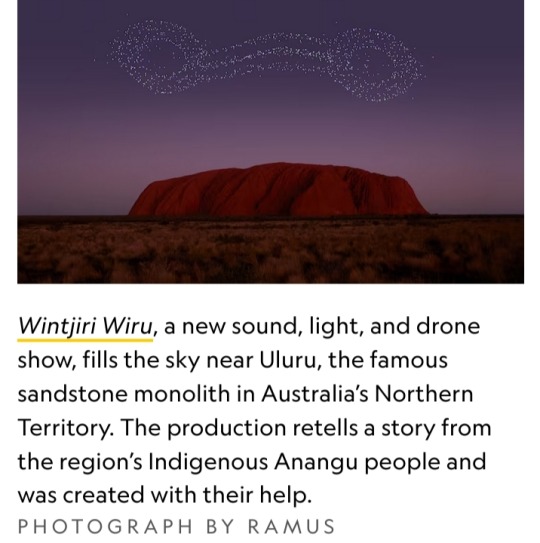
Why travelers love spectacles
Experts think people are drawn to these shows for their sense of wonder and spectacle.
“Sound and light shows are like fireworks—it’s impossible to look away,” says Miziker.
"Since audiences are sitting in the dark, there’s cognitive dissonance, with the atmosphere almost becoming its own entity,” says Lovell.
youtube

https://youtu.be/FV3XdOda3zM
Plus, in this age of Instagram, sound and light spectacles make ideal selfie backdrops or video ops.
“When Moment Factory started doing shows, we didn’t want people to have their phones out,” says McHugh.
Now, other digital production studios build in elements like photo booths to encourage participants to share their experiences.

How sound and light shows help tourist sites
Sound and light shows can be expensive and time-consuming to design.
(Wintjiri Wiru was developed over several years and cost $10 million.)
But many tourist attractions and cities are willing to shell out.
“They produce new income streams,” says Ashton. “People normally go home at night, but if you sell them a ticket to an illumination, they’ll come back.”
Many sound and light experiences in public, urban spaces — outside cathedrals, on city halls, across skyscrapers — are free, but paid for by cities to give visitors an excuse to stay an extra night.
“We used to think of tourism as a daytime activity, but there has been this tourist-ification of the night,” says Andrew Smith, a professor of urban experiences at England’s University of Westminster.
“Now cities want to attract people and keep them in town. It’s a commodification of the night, a way to extend economic and cultural activity.”
Studies indicate that these shows might even make city downtowns feel safer. “It starts to dematerialize the buildings,” says Ramus.
“You just see the lights, and our cities become transparent. They feel gentler.”

#Youtube#Wintjiri Wiru#son et lumière#sound and light shows#Paul Robert-Houdin#Château de Chambord#France#Pyramids at Giza#Cathedral of Notre-Dame#Regalia#Moment Factory#Uluru#Anangu people#Voyages Indigenous Tourism#The Night Spectacular#King David#Jerusalem#Projection Studio#San Fernando Cathedral#Tower of David#LED lights#drones#sound#lasers#Aura Invalides#National Geographic#Nat Geo#The Saga
4 notes
·
View notes
Link
0 notes
Link
0 notes
Text
Things to Do in Manikaran and Kasol

Try cafes at Kasol - With infusion of cultures, you will find some of the best cafes here like Moon Dance Café, Buddha Place, WoodRose Café and camps etc.
Visit Hot springs - These nature’s very own saunas are great to visit. You can go to Manikaran, Vashisht Hot spring, Tattapani etc.
Try Israeli food - Very much influenced with Israeli culture and is also known as Mini Israel of India, trying Israeli food is a must do thing here.
Trek - You can try the short treks like Rasol trek, Chalal Trek Trail etc. As these short trekking trails it will not be tiring so after this you can continue with sightseeing or other activities. Kasol Kheerganga Trek is one of the famous trekking trail in Himalayas to must experience.
To experience a delightful escape into the lap of Himalayas that offers a perfect blend of natural beauty, spirituality adventure and cultural immersion, choose Kasol Manikaran Tour Package.
0 notes
Text
5 Incredible Budget-Friendly Himachal Tours That Won't Break Your Bank

If you are searching for a perfect mountain destination that still doesn’t cost a fortune, take a look at our top list below. Come and enjoy the stunning beauty of the Himachal Pradesh, known as India’s paradise of peaks, you can enjoy budget travel activities whilst being amazed. Scroll down to read about the top 5 places in Himachal tourist attractions that bring together great places to see and value for money.
1. The Magical Mcleodganj Trek & Temple Tour
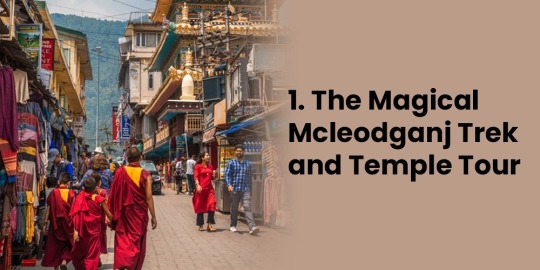
Discover the spiritual heart of Himachal in Mcleodganj, the home of His Holiness the Dalai Lama. This 3-day budget tour includes:
Guided visit to the famous Tsuglagkhang Complex
Trek to Triund with stunning Dhauladhar views
Local homestay experience with traditional Himachali meals
Meditation session at local monastery
Shopping at Tibetan Market
Perfect for: Solo travelers and spiritual seekers
Best time to visit: March-June, September-November
2. Kasol-Tosh Budget Adventure
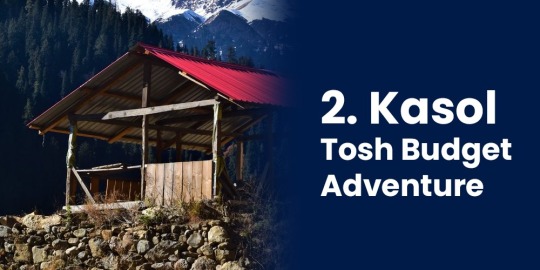
Experience the hippie vibes and natural beauty of Parvati Valley. This 4-day pocket-friendly tour covers:
Riverside camping in Kasol
Day trek to magical Tosh village
Traditional Himachali cooking workshop
Cafe hopping in "Mini Israel"
Hot spring visit at Manikaran
Perfect for: Backpackers and nature lovers
Best time to visit: April-June, October-November
3. Shimla Heritage Walk & Kufri Adventure
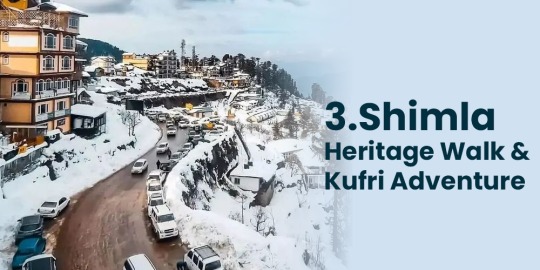
Combine colonial charm with outdoor activities in Himachal's capital region:
Heritage walk on Mall Road
Horse riding in Kufri
Visit to Jakhu Temple
Local craft workshops
Toy train ride experience
Perfect for: Families and first-time visitors
Best time to visit: Year-round except peak winters
4. Dharamshala Cricket & Culture Tour
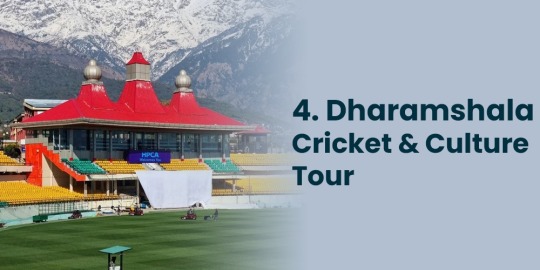
Mix sports with spirituality in this unique 3-day experience:
Visit to HPCA Cricket Stadium
Bhagsu waterfall trek
Temple tour including Bhagsunag Temple
Tibetan cooking class
Tea garden visit
Perfect for: Sports enthusiasts and culture lovers
Best time to visit: March-June, September-October
5. Manali Budget Bliss
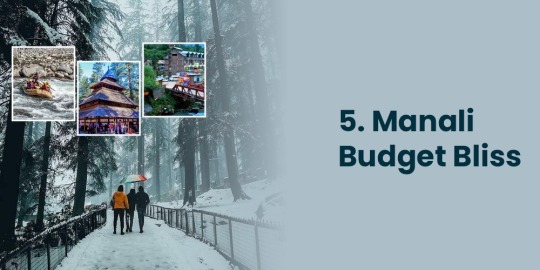
Experience adventure sports and temple visits in this action-packed tour:
River rafting in Beas (beginner level)
Hadimba Temple visit
Old Manali exploration
Local craft market visit
Solang Valley activities
Perfect for: Adventure seekers and temple enthusiasts
Best time to visit: May-July, September-October
Essential Tips for Budget Travelers
Best Time to Book: Book during shoulder season (March-April or September-October) for better rates
Local Transport: Use HRTC buses for intercity travel to save money
Stay Options: Mix homestays with budget hotels for authentic experiences
Meal Planning: Try local dhabas for authentic, affordable food
Group Size: Travel in small groups of 4-6 for Top Tour Operators For Temple
Finding Reliable Tour Operators
For the best temple tours and outdoor activities in Himachal, consider these tips:
Look for operators registered with Himachal Tourism
Read recent reviews and testimonials
Compare packages from multiple operators
Check if they offer customization options
Verify included activities and hidden costs
Of course, affordable Himachal Pradesh trips are quite possible and at the same time the value is preserved here. These cost effective tours can provide travelers with an experience of the adventurers; the mystics; and the cultural aspect too. If you are more of a spiritual traveller looking for calm temples or an adventurous soul looking for adrenaline gushing tours in Himachal, these tours offer experiences to cherish and don’t burn a hole in your pocket.
If you are thinking of a Himalayan adventure, you can begin to plan your budget travel now and realize why Himachal Pradesh truly is a gold mine of budget travel!
0 notes
Text
Are You Ready for the Incredible Sar Pass Adventure?

If you're craving a blend of scenic beauty, adrenaline-pumping trails, and serene landscapes, the Sarpass trek should be on your bucket list! Perched in the majestic Himalayas, this trek is a mesmerizing journey through dense forests, tranquil meadows, and snowy trails. Here’s everything you need to know to embark on this once-in-a-lifetime adventure.
Sar Pass: A Symphony of Nature's Wonders
Sar Pass is a hidden gem in the Parvati Valley. The trek derives its name from "Sar," a frozen lake that trekkers cross during their journey. Surrounded by snow-capped peaks, lush greenery, and breathtaking landscapes, the trail is a paradise for adventure enthusiasts. The diverse terrain, ranging from dense pine forests to sparkling snowfields, offers an unforgettable trekking experience.
Kasol Sar Pass: Gateway to Serenity
Your adventure begins in the quaint village of Kasol, often called the “Mini Israel” of India. The Kasol Sar Pass trekking route is as picturesque as it is challenging, winding through charming hamlets, bubbling streams, and aromatic pine forests. The Grahan Village, a 200-year-old marvel, serves as the first major stop, where the warmth of local Himachali hospitality welcomes trekkers.
Sar Pass Trekking Highlights
The trek is more than just a journey; it's an experience. You'll traverse through iconic locations like Min Thach, Nagaru, and the stunning Sar Pass itself. Along the way, the views of the Parvati and Beas valleys are nothing short of magical. Witness the Sar Pass weather change dramatically, offering a mix of sunny days, misty trails, and icy nights.
Sar Pass Height in Feet: A Challenge Worth Taking
Scaling up to 13,800 feet, the Sar Pass trek is both thrilling and rewarding. While the trek is categorized as easy to moderate, Sar Pass Height and weather can make it demanding. Proper acclimatization is key to enjoying the breathtaking panoramas without being hindered by altitude sickness.
Sarpass Trek: Best Time to Conquer
The Sar Pass trek best time spans from May to October, when the region is adorned with vibrant flora and pristine snow. Spring brings colourful rhododendrons and lush greenery, while summer offers clearer skies and warmer trails. Monsoon can make the trails slippery but adds a magical misty aura.
Sar Pass: An Experience Beyond Adventure
The Sar Pass trek is not just about the destination but the journey. Whether you're sipping tea at a campsite overlooking the valley, crossing streams on makeshift wooden bridges, or enjoying freshly prepared Himachali meals, every moment is a memory in the making. The camaraderie among fellow trekkers and the support of experienced guides make this trek an enriching experience.
Why Choose Sar Pass Trek?
This year’s Sar Pass trek promises enhanced experiences with professional guides, comfortable accommodations, and meticulously planned itineraries. Packages include stays in guesthouses, homestays, or campsites, with delicious vegetarian meals to keep your energy up for the 50-km trail.
Universal Adventures offers comprehensive packages that cater to your every need, ensuring safety and convenience. With expert trek leaders, necessary permits, and high-quality safety equipment, you can focus solely on immersing yourself in the beauty of the Himalayas.
Conclusion
The Sar Pass trek is a harmonious blend of nature, adventure, and tranquillity. Whether you're an experienced trekker or a first-timer, this journey through the Parvati Valley will leave you spellbound. So gear up, pack light, and set your sights on this Himalayan wonder.
Your Sar Pass adventure awaits—let the mountains call you!
0 notes
Text
Tempo Traveller Hire from Delhi to Kasol Tour

Kasol is a favorite place for backpackers, trekkers, and young travelers. Often called the "Mini Israel of India," it attracts both Indian and international visitors. It’s also one of the best weekend getaway spots from Delhi, especially if you travel by tempo traveller.
If you’re planning a weekend trip to Kasol with friends for trekking, booking a Delhi to Kasol Tempo Traveller can make your journey smooth and comfortable. Our tempo travellers come with great features, including options for different seating capacities, spacious luggage areas, music systems, and reclining seats. These features make the overnight road trip to Kasol enjoyable and convenient for everyone.
#tempotraveller#actempotraveller#delhitokasol#tempotravellerrental#outstationtrip#roadtrips#delhitokasoltour
0 notes
Text
Best Kasol Packages from Delhi: Your Gateway to a Scenic Himalayan Escape
Best Kasol Packages from Delhi: Your Gateway to a Scenic Himalayan Escape
Nestled in the enchanting Parvati Valley of Himachal Pradesh, Kasol has emerged as one of the most popular destinations for travelers seeking a peaceful retreat amidst nature. Known for its scenic beauty, vibrant culture, and adventurous treks, Kasol offers a perfect blend of serenity and adventure. Whether you're a backpacker looking to explore its trails, a couple searching for a romantic getaway, or an adventurer seeking thrill in the mountains, Kasol has something for everyone.
If you’re traveling from Delhi, booking one of the many Kasol packages from Delhi is a convenient and affordable way to plan your trip. These packages not only take care of your accommodation and transportation but also ensure you experience the best of Kasol and its surrounding areas. Let’s dive deeper into the different types of Kasol trip packages and why Kasol should be on your travel list.
Why Choose Kasol as Your Next Destination?
Kasol is often referred to as the “Mini Israel of India” due to its significant influx of Israeli tourists and its vibrant Israeli food scene. Its natural beauty is unmatched, with lush green valleys, snow-capped peaks, and the pristine Parvati River flowing by its side. The town offers an ideal retreat for those who wish to escape the bustling city life and soak in the tranquility of the Himalayas.
Whether you are keen on trekking, exploring nearby villages like Tosh and Malana, or just relaxing in nature, Kasol has it all. And with a variety of Kasol packages, you can customize your experience based on your preferences and budget.
Types of Kasol Packages from Delhi
Budget-Friendly Kasol Trip Packages
If you're a traveler on a tight budget, budget-friendly Kasol trip packages from Delhi are a perfect choice. These packages cater to backpackers, students, and budget-conscious travelers who wish to explore Kasol without spending too much. Typically, these packages include:
Round-trip travel from Delhi in comfortable buses or shared taxis.
Affordable accommodation in hostels, guesthouses, or campsites.
Basic meal options (some packages may include breakfast or dinner).
Guided tours of popular sites like Chalal, Tosh, and Kheerganga.
Optional activities like bonfires, nature walks, and short treks.
These budget packages focus on delivering a great travel experience at minimal cost, making them ideal for solo travelers or groups of friends looking to explore Kasol on a shoestring budget.
Luxury Kasol Tour Packages
For those who prefer a more comfortable and lavish stay, luxury Kasol tour packages offer an upgraded travel experience. These packages often include:
Private transfers from Delhi in air-conditioned cars or SUVs.
Stay in luxury resorts, boutique hotels, or riverside cottages offering scenic views and premium amenities.
Personalized tours to nearby villages like Malana, Tosh, and Manikaran.
Fine dining experiences featuring local and international cuisines.
Optional adventure activities such as paragliding, river rafting, or longer trekking expeditions.
These packages are perfect for couples, families, or travelers seeking a more relaxed and luxurious Himalayan escape. Whether it’s a honeymoon trip or a family vacation, luxury Kasol packages ensure that you experience Kasol in comfort and style.
Manali Kasol Tour Package
Combining two of Himachal Pradesh’s most sought-after destinations, the Manali Kasol tour package is perfect for those who wish to explore both the serene landscapes of Kasol and the bustling adventure hub of Manali. Here’s what you can expect from a typical Manali Kasol tour package:
A scenic road journey from Delhi to Kasol with pit stops at key viewpoints along the way.
Guided exploration of Kasol, including visits to Chalal, Tosh, Kheerganga, and the hot springs of Manikaran.
A short trek to Triund or Kheerganga for an adventurous escape.
A road trip from Kasol to Manali, covering picturesque spots like the Parvati River and Beas Kund.
Stay in both Kasol and Manali, with accommodation ranging from budget to luxury based on your package selection.
Adventure activities in Manali like river rafting, paragliding, and visiting iconic sites such as Solang Valley, Rohtang Pass, and Old Manali.
This package is ideal for travelers who want a mix of serene relaxation in Kasol and the adrenaline-pumping adventures of Manali. With well-planned itineraries, the Manali Kasol tour package ensures you experience the best of both worlds.
Customized Kasol Packages from Delhi
If you’re someone who likes to have more control over your travel plans, many travel operators offer customized Kasol packages from Delhi. These packages allow you to choose:
The type of accommodation (from basic guesthouses to luxury resorts).
The activities you want to include (trekking, camping, cultural tours, etc.).
The duration of your stay and itinerary.
Transportation preferences (private car, shared taxi, or bus).
Customized Kasol packages are ideal for travelers who have specific preferences or want to explore Kasol at their own pace. Whether it’s a weekend trip or an extended stay, these packages can be tailored to suit your individual needs.
What to Expect in a Kasol Tour Package
When you book a Kasol tour package, here are some common inclusions and activities you can expect:
Accommodation: Based on your budget and preference, your stay could range from hostels and guesthouses to luxury resorts. Most packages offer riverside accommodations, providing stunning views of the Parvati River and the surrounding mountains.
Transportation: The package typically includes round-trip transportation from Delhi, either by bus or private vehicle. For luxury packages, private SUVs or cars are available for a more comfortable journey.
Local Sightseeing: Explore the nearby villages of Tosh, Chalal, and Malana, each offering its unique charm and beauty. The hot springs at Manikaran and the scenic trek to Kheerganga are also popular inclusions.
Trekking and Adventure Activities: Many packages include guided treks, like the Kheerganga trek or shorter nature walks around Kasol. You can also indulge in adventure activities like camping, river rafting, and paragliding, depending on the package.
Meals: Most packages include breakfast, and some may offer additional meals or packed lunches during treks. For budget packages, dining at local cafes in Kasol is a great way to experience the local Israeli and Himachali cuisine.
Best Time to Visit Kasol
The best time to visit Kasol largely depends on what kind of experience you're looking for:
Summer (March to June): Perfect for trekking, camping, and exploring the outdoors. The weather is pleasant, and the skies are clear.
Monsoon (July to September): While the valley looks lush and green, heavy rains can make trekking difficult and pose a risk of landslides.
Winter (October to February): If you love snow and want to experience Kasol in a magical winter setting, this is the best time to visit. However, be prepared for cold temperatures and check for road accessibility.
Final Thoughts
Kasol is a hidden gem in the Himalayas that offers a perfect blend of nature, adventure, and culture. By opting for one of the many Kasol packages from Delhi, you can enjoy a hassle-free and memorable journey. Whether you’re a solo traveler, a group of friends, or a family, there’s a Kasol trip package for every kind of traveler. So, pack your bags and get ready to explore the beautiful Parvati Valley with Voyagers Beat!
0 notes
Text
Kheerganga Trek Tourist Spot in Kasol, Himachal Pradesh
Kheerganga Trek, nestled in the Parvati Valley of Himachal Pradesh, India, is a destination that beckons both seasoned trekkers and first-time explorers. Renowned for its lush green meadows, enchanting hot springs, and stunning views of the Himalayas, this trek offers a serene escape into nature. It's a perfect adventure for those who wish to connect with the raw beauty of the mountains and explore the offbeat places near Kheerganga Trek that promise to take you off the usual tourist trails. Every step on this trek brings a new surprise, from vibrant landscapes to the peaceful sounds of the river flowing nearby.

Among the places to visit near Kheerganga Trek, the charming village of Kasol is a must-see. Known as the "Mini Israel of India," Kasol is famous for its unique culture, scenic beauty, and vibrant local markets. From here, you can take short walks to nearby villages like Tosh and Malana, each offering its distinct cultural experiences and breathtaking views. Whether you enjoy sipping tea by the riverside or trekking further into the woods, Kasol provides a delightful base to explore the surrounding areas.
If you're looking to extend your adventure, consider visiting Manikaran, a small town known for its hot springs and beautiful gurudwara, which is just a short drive away. Manikaran is revered by both Hindus and Sikhs and provides a spiritual twist to your journey. Another gem on your itinerary should be the stunning Chalal village, accessible via a short hike from Kasol. Chalal is an ideal spot for those who love photography and nature walks. Discovering these places to visit near Kheerganga Trek will surely enrich your travel experience and make your trip unforgettable.
#clearholidays#Kheerganga Trek#places to visit near Kheerganga Trek#Kheerganga Trek tourism#Kheerganga Trek travel guide#Himachal Pradesh#india#indian#travel#india travel#india tourism#incredible india#Kasol#Kasoltourism#adobe#adrienette#adventure#aespa#aesthetic
1 note
·
View note
Text
Mini Tiller Cultivator Market Research, Statistics, Industry Trends, CAGR 2024-2032

The Reports and Insights, a leading market research company, has recently releases report titled “Mini Tiller Cultivator Market: Global Industry Trends, Share, Size, Growth, Opportunity and Forecast 2024-2032.” The study provides a detailed analysis of the industry, including the global Mini Tiller Cultivator Market Growth share, size, trends, forecasts. The report also includes competitor and regional analysis and highlights the latest advancements in the market.
Report Highlights:
How big is the Mini Tiller Cultivator Market?
The mini tiller cultivator market size reached US$ 1.0 billion in 2023. Looking forward, Reports and Insights expects the market to reach US$ 1.4 billion in 2032, exhibiting a growth rate (CAGR) of 4.1% during 2024-2032.
What are Mini Tiller Cultivator?
A mini tiller cultivator is a compact, lightweight tool designed for soil preparation and cultivation in small or confined spaces. It features a small engine with rotating blades or tines that efficiently break up and aerate the soil, making it easier to plant seeds and manage garden beds. Perfect for residential gardens, small farms, or urban settings, mini tillers provide a practical and labor-saving solution for soil cultivation, enhancing soil structure and promoting healthier plant growth.
Request for a sample copy with detail analysis: https://www.reportsandinsights.com/sample-request/1831
What are the growth prospects and trends in the Mini Tiller Cultivator industry?
The mini tiller cultivator market growth is driven by various factors and trends. The mini tiller cultivator market is growing as more people seek efficient and user-friendly solutions for soil cultivation in small-scale gardening and urban farming. These compact and lightweight tools are popular for their ease of use and effectiveness in preparing garden beds and small plots. The market's expansion is fueled by increasing interest in home gardening and urban agriculture, along with the demand for versatile equipment that can handle different soil types. Advances in mini tiller technology and engine efficiency are also driving growth, providing enhanced performance and convenience for users. Hence, all these factors contribute to mini tiller cultivator market growth.
What is included in market segmentation?
The report has segmented the market into the following categories:
Product Type:
Electric Mini Tiller Cultivators
Gas-Powered Mini Tiller Cultivators
Battery-Powered Mini Tiller Cultivators
Power Output:
Low Power Mini Tiller Cultivators
Medium Power Mini Tiller Cultivators
High Power Mini Tiller Cultivators
Tilling Width:
Small Tilling Width Mini Tiller Cultivators
Medium Tilling Width Mini Tiller Cultivators
Large Tilling Width Mini Tiller Cultivators
Application:
Residential Mini Tiller Cultivators
Commercial Mini Tiller Cultivators
Agricultural Mini Tiller Cultivators
Sales Channel:
Online Sales
Offline Sales
End-User:
Home Gardens
Urban Farms
Small Agricultural Plots
Blade Type:
Standard Blades
Serrated Blades
Price Range:
Low-Range Mini Tiller Cultivators
Mid-Range Mini Tiller Cultivators
High-Range Mini Tiller Cultivators
Customer Age Group:
Young Adults
Middle-aged Adults
Seniors
Distribution Channel:
Direct Sales
Distributor/Wholesaler
Report Segmentation:
North America:
United States
Canada
Europe:
Germany
United Kingdom
France
Italy
Spain
Russia
Poland
BENELUX
NORDIC
Rest of Europe
Asia Pacific:
China
Japan
India
South Korea
ASEAN
Australia & New Zealand
Rest of Asia Pacific
Latin America:
Brazil
Mexico
Argentina
Rest of Latin America
Middle East & Africa:
Saudi Arabia
South Africa
United Arab Emirates
Israel
Rest of MEA
Who are the key players operating in the industry?
The report covers the major market players including:
Husqvarna Group
Honda Motor Co., Ltd.
Mantis
STIHL Group
Troy-Bilt
John Deere
Earthquake
Yard Machines
Craftsman
Greenworks Tools
ECHO Incorporated
Tielbürger
Yanmar Co., Ltd.
View Full Report: https://www.reportsandinsights.com/report/Mini Tiller Cultivator-market
If you require any specific information that is not covered currently within the scope of the report, we will provide the same as a part of the customization.
About Us:
Reports and Insights consistently mееt international benchmarks in the market research industry and maintain a kееn focus on providing only the highest quality of reports and analysis outlooks across markets, industries, domains, sectors, and verticals. We have bееn catering to varying market nееds and do not compromise on quality and research efforts in our objective to deliver only the very best to our clients globally.
Our offerings include comprehensive market intelligence in the form of research reports, production cost reports, feasibility studies, and consulting services. Our team, which includes experienced researchers and analysts from various industries, is dedicated to providing high-quality data and insights to our clientele, ranging from small and medium businesses to Fortune 1000 corporations.
Contact Us:
Reports and Insights Business Research Pvt. Ltd. 1820 Avenue M, Brooklyn, NY, 11230, United States Contact No: +1-(347)-748-1518 Email: [email protected] Website: https://www.reportsandinsights.com/ Follow us on LinkedIn: https://www.linkedin.com/company/report-and-insights/ Follow us on twitter: https://twitter.com/ReportsandInsi1
#Mini Tiller Cultivator Market share#Mini Tiller Cultivator Market size#Mini Tiller Cultivator Market trends
0 notes
Text
A Magical New Year Celebration in Himachal Pradesh

As the New Year approaches, the allure of celebrating amidst the serene and picturesque landscapes of Himachal Pradesh becomes irresistible. Known for its snow-capped mountains, vibrant culture, and warm hospitality, Himachal Pradesh offers a unique blend of tranquility and festivity. If you’re looking to ring in the New Year in an unforgettable way, Himachal Pradesh is the perfect destination.
Why Himachal Pradesh?

Himachal Pradesh, nestled in the lap of the Himalayas, is a haven for those who love nature, adventure, and a bit of magic in their celebrations. The state is dotted with charming hill stations like Manali, Shimla, Dharamshala, and Kasol, each offering its own unique vibe. The crisp mountain air, twinkling stars, and the gentle glow of bonfires make for a magical backdrop as you welcome the New Year.
Manali: The Party Hub
Manali is one of the top destinations for New Year celebrations in Himachal Pradesh. The town comes alive with music, dance, and laughter as both locals and tourists gather to celebrate. Bonfires are lit, and the sound of music fills the air, creating an atmosphere of pure joy. The Mall Road, the heart of Manali, becomes a hub of activity with parties hosted in various cafes, bars, and hotels. If you’re looking for a blend of adventure and celebration, consider starting your day with some snow activities in Solang Valley and ending it with a party under the stars.
Shimla: A Classic Celebration
Shimla, the capital of Himachal Pradesh, offers a more classic New Year celebration. Known for its colonial charm and beautiful views, Shimla is perfect for those who want to celebrate in style. The Ridge and Mall Road are beautifully lit up, and the city hosts several cultural events and parties. Many luxury hotels in Shimla offer special New Year packages that include gourmet dinners, live music, and entertainment.
Kasol: A Hippie’s Delight
For a more offbeat celebration, head to Kasol, often referred to as the “Mini Israel of India.” This small village in the Parvati Valley is famous for its laid-back vibe and scenic beauty. The New Year parties in Kasol are more relaxed and often involve bonfires, music, and a lot of good vibes. It’s the perfect spot for those who want to celebrate in a more intimate and unconventional setting.
Dharamshala: A Spiritual Start to the Year

If you’re looking for a more spiritual way to welcome the New Year, Dharamshala and McLeod Ganj are ideal choices. Home to the Dalai Lama and a large Tibetan community, these towns offer a peaceful and serene environment. You can spend your New Year’s Eve attending a meditation session, enjoying a quiet dinner at one of the many cozy cafes, or simply gazing at the stars. The calm and spiritual atmosphere makes it a perfect place to reflect on the past year and set intentions for the year ahead.
Practical Tips for Celebrating New Year in Himachal
Book Early: New Year is a peak season in Himachal Pradesh, so it’s essential to book your accommodation and travel in advance.
Pack Warm Clothes: The weather in Himachal can be freezing in December and January, especially at night. Make sure to pack plenty of warm clothes, including thermal wear, jackets, gloves, and scarves.
Stay Safe: If you’re planning to drive, be cautious as the roads can be slippery due to snow. It’s also advisable to check the weather forecast and road conditions before heading out.
Local Festivals: Check if there are any local festivals or events happening around New Year’s Eve in the area you’re visiting. These can add an extra layer of cultural experience to your celebration.
Conclusion
Celebrating New Year in Himachal Pradesh is an experience like no other. Whether you choose to party in Manali, enjoy the classic charm of Shimla, relax in Kasol, or find peace in Dharamshala, you’re sure to have a memorable start to the year. The combination of natural beauty, vibrant culture, and the warmth of the people makes Himachal Pradesh the perfect destination for a magical New Year celebration.
HIMACHAL VS. UTTARAKHAND: WHICH HIMALAYAN HAVEN SHOULD YOU CHOOSE?
Introduction
When it comes to exploring the majestic Himalayas, Himachal Pradesh and Uttarakhand are two states that often come to mind. Both are home to stunning landscapes, charming hill stations, and rich cultural experiences. However, choosing between the two can be challenging as each state has its own unique appeal. This guide compares the best of Himachal Pradesh and Uttarakhand to help you decide which Himalayan haven is the perfect choice for your next getaway.
Scenic Beauty: A Battle of Landscapes
Himachal Pradesh: Known for its dramatic and varied landscapes, Himachal Pradesh offers everything from lush valleys and dense forests to snow-capped mountains and glistening rivers. Destinations like Manali, Spiti Valley, and Dalhousie are known for their breathtaking beauty and are perfect for both adventure seekers and those looking to relax.
Uttarakhand: Uttarakhand, often referred to as “Devbhoomi” or the “Land of the Gods,” is equally mesmerizing. The state is famous for its pristine rivers, sacred lakes, and snow-covered peaks. Nainital, Rishikesh, and Auli are some of the most popular destinations, each offering a unique experience. Whether you want to go trekking in the Garhwal Himalayas or seek spiritual solace in Haridwar, Uttarakhand has it all.
Adventure Activities: Thrills in the Hills
Himachal Pradesh: Himachal Pradesh is a haven for adventure enthusiasts. The state offers a wide range of activities such as paragliding in Bir Billing, skiing in Solang Valley, and river rafting in Kullu. The treks here, especially in regions like Spiti and Kinnaur, are both challenging and rewarding, offering stunning views of the surrounding landscapes.
Uttarakhand: Uttarakhand is also a paradise for adventure lovers. The state is renowned for its treks, including the Valley of Flowers, Kedarkantha, and Roopkund treks. Rishikesh, known as the Yoga Capital of the World, is also famous for its river rafting and bungee jumping. Auli, on the other hand, is a popular destination for skiing during the winter months.
Spirituality and Wellness: A Journey Within

Himachal Pradesh: While Himachal is more famous for its natural beauty and adventure activities, it also has its share of spiritual sites. Dharamshala and McLeod Ganj are known for their Buddhist monasteries and the presence of the Dalai Lama. The state is also home to ancient temples like the Hidimba Devi Temple in Manali and the Baijnath Temple near Kangra.
Uttarakhand: Uttarakhand takes the lead when it comes to spirituality and wellness. The state is home to several sacred sites, including the Char Dham (Yamunotri, Gangotri, Kedarnath, and Badrinath), which are among the most important pilgrimage sites in Hinduism. Rishikesh is not only a hub for yoga and meditation but also a gateway to the Himalayas for those seeking spiritual growth and inner peace.
Accessibility and Accommodation: Comfort in the Hills
Himachal Pradesh: Himachal Pradesh is well-connected by road and air, making it relatively easy to access. The state offers a wide range of accommodation options, from luxury resorts to budget hotels and cozy homestays. Popular tourist destinations like Manali, Shimla, and Dharamshala have plenty of options to suit every budget.
Uttarakhand: Uttarakhand is also easily accessible, with major cities like Dehradun and Haridwar well-connected by road, rail, and air. The state offers a variety of accommodation options, from high-end resorts to simple guesthouses and ashrams, especially in spiritual hubs like Rishikesh and Haridwar.
Conclusion: Which Should You Choose?
The choice between Himachal Pradesh and Uttarakhand ultimately depends on what you’re looking for in your Himalayan adventure. If you’re seeking a blend of adventure, natural beauty, and vibrant culture, Himachal Pradesh might be the better choice. On the other hand, if you’re looking for a spiritual journey, wellness retreats, and a connection to nature, Uttarakhand is the ideal destination.
Both states offer unique experiences that will leave you with unforgettable memories. Whether you choose Himachal or Uttarakhand, you’re sure to have an incredible time exploring the wonders of the Himalayas.
0 notes
Text
Best Places to Visit Near Manali

Manali is known for its great natural beauty, adventure activities and tranquillity. Some of the Best Places to Visit Near Manali, Himachal Pradesh are discussed below:
Solang Valley: Serves as a haven for all kinds of adventure sports enthusiasts. Winter time turns it into a skiing paradise while summer lets one engage in paragliding, zorbing and horse riding.
Rohtang Pass: Located some 51 km from Manali, this place gives an all-round view of mountains and valleys. This is one of the famous places for snow activities and a gateway to Lahaul and Spiti valleys.
Manikaran: This place, famous for its hot springs and religious mythology, is located about 85 km from Manali. This city is located on the banks between the Parvati River and the steeply rising hillside and forms one of the scared places of Hindus and Sikhs with the famous Manikaran Sahib Gurudwara.
Kasol: more commonly referred to as the "Mini Israel of India”.One of Parvati Valley's most beautiful villages, it has been highly ranked. It has tranquil beauty and a relaxed atmosphere, making it just the kind of place that backpackers and trekkers really enjoy.
Naggar: This ancient town lies about 20 km from Manali. In Naggar, one can see an ancient castle, temples, and the famous Roerich Art Gallery. This town provides a tranquil environment with a view of ancient history.
The places around Manali have the essence of adventure, culture, and natural beauty combined in them, which make it good enough for an all-round visit. Make sure to explore these beautiful Places in Himachal for a fabulous winter vacation this year.
0 notes
Text
Sar Pass Trek Distance: A True Test for Every Adventurer!

The Sar Pass Trek Distance is a 50-kilometre journey that tests endurance and offers a mesmerizing experience for those who love adventure. This trek, set in Himachal Pradesh, takes you through the stunning Kasol altitude, an elevation that gradually reaches a breathtaking 13,800 feet above sea level. The adventure, spread over five days, is marked by snow-covered trails, dense forests, and the serene beauty of the Parvati Valley.
Experience the Thrill of 13,800 Feet – Sar Pass Height in Feet
Perched at a remarkable sar pass height in feet, this trek offers panoramic views that leave trekkers in awe. Alongside these heights, trekkers encounter diverse landscapes—from the vibrant greens of dense pine and rhododendron forests to icy terrains. The view of pristine white snow contrasting with lush meadows and the sight of towering peaks make the climb worthwhile for every adventurer.
Journey Through 50 KM of Nature – Sar Pass Trek Distance
Spanning a sar pass trek distance of 50 kilometres, the route is a blend of calm and challenge. Starting from the picturesque village of Kasol, the trek leads you to Grahan Village, known as India’s Mini Israel. It continues through the beautiful trails of Min Thach and Nagaru, eventually reaching the frozen lake “Sar” that gives Sar Pass its name. Every step along this trail brings trekkers closer to a unique, untouched world.
The Perfect Climate for a Himalayan Adventure – Sar Pass Temperature
The weather along Sar Pass varies between -5°C to 22°C, creating the perfect environment for an exhilarating experience. The Sar pass temperature drops significantly at night, so warm clothing is essential. The trek is open from May to October when the temperatures make it ideal to enjoy the stunning natural beauty of the Himalayas without facing extreme weather conditions.
Kasol Scenic Start to Sar Pass Trek – Kasol altitude
Kasol's altitude of around 5,200 feet, this small yet vibrant village serves as the starting point for the Sar Pass trek. Kasol offers a serene escape from bustling city life, and as you climb, you can enjoy breathtaking views of the Parvati River, waterfalls, and evergreen forests. Known for its unique culture and warm local community, Kasol is a favourite spot among trekkers, making it an ideal place to begin this journey.
Best Time to Embark on the Sar Pass Trek
The Sar Pass is best enjoyed from May to October when the weather is favourable, and the views are crystal clear. With lower chances of snowstorms and manageable temperatures, these months offer trekkers the ideal window to explore the Himalayas. Starting from Kasol altitude and rising to Sar Pass height in feet, this trek promises an unforgettable adventure in every season.
Highlights and Must-See Spots
During the Sar Pass, you’ll encounter landmarks that capture the essence of Himachal’s rugged beauty. Highlights include the serene Parvati Valley, the ancient Grahan Village, and the stunning Biskeri Ridge. The hospitality of the local communities, along with the guidance of professional trekking leaders, ensures a safe and enjoyable journey.
Adventure with Comfort at Sar Pass
Although the trek itself is a thrilling challenge, it also provides comfortable stay options, from guest houses to camping under the stars. With hearty, freshly prepared Himachali meals and necessary trekking equipment provided, trekkers can focus on the breathtaking sights and experiences.
Embark on the Sar Pass trek distance, witness a Sar Pass height in feet that reach the clouds, and immerse yourself in the enchanting world of Kasol and beyond. Each moment on this journey is a celebration of nature, resilience, and the timeless beauty of the Himalayas.
0 notes